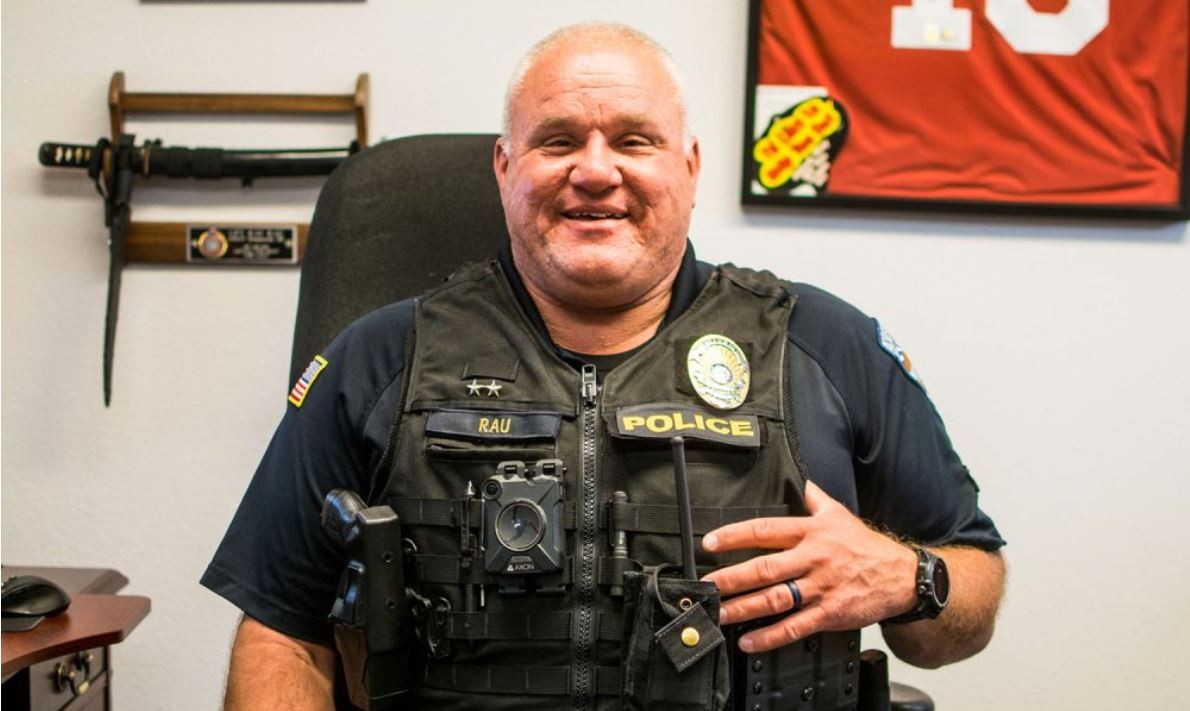The DNA backlog;
The Post and Courier (Charleston, SC)
BYLINE: GLENN SMITH, The Post and Courier
Columbia, SC
SLED crime lab unable to keep up with demand
The robber moved through York County like a one-man crime wave, shooting four people in a string of business holdups. Investigators were stumped. All they had to go on was a pen the bandit had fingered during one heist.
Hoping for a lead, sheriff's deputies rushed the pen to the State Law Enforcement Division's crime lab in Columbia. Analysts worked through the night extracting DNA the robber had left behind with his touch.
That genetic evidence revealed the robber's identity as a young convict recently released from prison.
The robber, arrested last year, is now serving a life sentence for his crimes. But York County Sheriff Bruce Bryant can't help but wonder how many more robberies the crook would have committed if not for SLED's microscopic find.
"DNA testing has come so far," Bryant said. "It's really the wave of the future in law enforcement."
The problem is only a few cases get the instant attention reserved for the most violent crimes.
SLED's crime lab, like many such facilities across the country, can't keep up with the demand for its services. With about 290 new DNA cases arriving each month, the lab is struggling to whittle away at a backlog of some 3,000 older cases that still await testing. DNA cases account for about 70 percent of the crime lab's overall backlog, said Maj. Todd Hughey, director of SLED's Forensic Services lab.
That backlog means police agencies and prosecutors often must wait months for the results they need to solve or solidify cases. In the meantime, criminals responsible for these offenses can remain on the street, unpunished, free to cause more trouble.
SLED officials said they are doing the best they can given state budget woes that have left them unable to fill key lab positions.
The number of cases requiring DNA analysis has nearly doubled over the past two years while staffing has gone down. Each of the agency's 14 analysts is now handling upward of 120 cases per year, Hughey said.
A national challenge
The problem is hardly limited to South Carolina.
Los Angeles had a backlog of more than 7,000 cases last year. The nation's overall DNA evidence backlog stood at 542,000 cases when the federal government last put a number to the problem in 2003.
Sarah Tofte, a researcher at Human Rights Watch who tracks DNA backlogs, estimated the number of cases awaiting attention hovers around 400,000 today despite the more than $1 billion the federal government has committed to reducing backlogs.
SLED has received about $1 million each year in federal funds since 2003 to catch up on its DNA backlog, Hughey said. Among other things, that money pays for analysts to devote extra hours on nights and weekends to these cases. That has helped, but a healthy backlog remains. In total, the forensic lab operates on about $8 million per year.
"Crime labs all over the country are overwhelmed by the amount of DNA testing being requested," Tofte said. "Federal grants can help, but ultimately there has to be a commitment to expand the capabilities of state crime labs or they are never going to catch up."
Pete Marone, director of Virginia's crime lab and chairman of the Consortium of Forensic Science Organizations, said remarkable strides have been made in DNA analysis. In the early 1990s, analysts would have needed a blood sample the size of a half-dollar to get a usable DNA sample. Now, DNA can be mined from a sample invisible to the naked eye. That has increased expectations and demand that has far outpaced staffing and resources, he said.
"They are sending in cases they would have never sent us before," Marone said. "The capacity of crime labs nationwide has probably increased 300 percent, but the number of cases has increased 310 percent."
Juries also have come to expect DNA evidence in trials, fueled by television programs such as "CSI: Crime Scene Investigation," where science solves all in a tidy one-hour time frame.
"People watch a lot of 'CSI' and they want to have DNA for anything and everything," Hughey said. "But that is not real-world forensic science."
Waiting for answers
Technological improvements enable SLED analysts to process DNA evidence much more quickly these days.
In high-priority cases such as the York County robber or the Gaffney spree killer who gunned down five people this past summer, SLED can get results into the hands of investigators in 24 hours if needed, Hughey said.
Last year, SLED's lab helped Charleston police tie a 30-year-old man to a string of Lowcountry rapes by getting DNA results back to investigators just a couple of weeks after the last attack occurred.
That sort of turnaround, however, happens in only a handful of cases. SLED gives priority to violent crimes such as homicide, rape and assaults on children, but it can still take nearly three months for a typical DNA case to be processed. Some cases take even longer, as much as eight months at times.
Property crimes such as burglaries account for about four out of every 10 cases processed, Hughey said.
Law enforcement officials and prosecutors give SLED's lab high marks for the quality of its work, and few question the dedication of its scientists. But concerns remain over the lengthy wait for results.
Some police agencies, including the Charleston County Sheriff's Office, want to start their own DNA labs to get testing done more quickly. Money, however, has been hard to come by for such ventures. Richland County has the only working DNA crime lab outside of SLED, though Greenville County is in the process of starting one as well. For most agencies, SLED remains the only game in town.
A sharper focus
Hughey said the lab's goal is to reduce the waiting period for DNA results to about 30 days. That would be about the same as the turnaround period in the lab's toxicology, fingerprint analysis and drug identification units. They hope to get there with the aid of new lab equipment that speeds up evidence processing. They've also adopted efficiency measures such as new guidelines asking police agencies to limit their initial submissions for DNA analysis to five items per case, he said.
Some homicide cases arrive with 40 samples or more to be tested. That takes time and keeps analysts from working on other cases, Hughey said.
Some law enforcement agencies are concerned about the new rules.
North Charleston police Sgt. Al Hallman, who oversees his department's crime scene unit, said the change has left several cases with 30 to 40 samples sitting in limbo at SLED, including the unsolved homicide of a woman who was shot to death last year.
"When dealing with homicides, it is difficult to determine which samples are crucial and which can be delayed for whatever reason," he said.
Hughey said police always submit more samples if the first batch doesn't yield results.
But that can add even more time to the process, 9th Circuit Solicitor Scarlett Wilson said. "We can't always test everything we want, and then if we get results that beg more questions, we get in a vicious cycle of waiting and having law enforcement ferry items to and from Columbia."
SLED Lt. Robin Taylor, who supervises the DNA unit, said she fully understands how important it is for police and prosecutors to get the evidence they need to make cases.
"I really am passionate about us always doing the best we can," she said. "It's just incredible how the caseload has gone up. But I promise you, we really are trying."
BY THE NUMBERS
The breakdown of cases in SLED's DNA backlog:
* Burglaries 38 percent
* Homicides 6 percent
* Sexual Assaults 14 percent
* Miscellaneous* 42 percent
*NOTE: This includes vehicle crimes, robberies, larcenies, assaults, suicides and other death investigations.
Source: SLED
- - - - - - - - - - - - - - - - - - - - - - - - - - - - - - -
International Association for Property and Evidence
"Law Enforcement Serving the Needs of Law Enforcement"
www.IAPE.org
BYLINE: GLENN SMITH, The Post and Courier
Columbia, SC
SLED crime lab unable to keep up with demand
The robber moved through York County like a one-man crime wave, shooting four people in a string of business holdups. Investigators were stumped. All they had to go on was a pen the bandit had fingered during one heist.
Hoping for a lead, sheriff's deputies rushed the pen to the State Law Enforcement Division's crime lab in Columbia. Analysts worked through the night extracting DNA the robber had left behind with his touch.
That genetic evidence revealed the robber's identity as a young convict recently released from prison.
The robber, arrested last year, is now serving a life sentence for his crimes. But York County Sheriff Bruce Bryant can't help but wonder how many more robberies the crook would have committed if not for SLED's microscopic find.
"DNA testing has come so far," Bryant said. "It's really the wave of the future in law enforcement."
The problem is only a few cases get the instant attention reserved for the most violent crimes.
SLED's crime lab, like many such facilities across the country, can't keep up with the demand for its services. With about 290 new DNA cases arriving each month, the lab is struggling to whittle away at a backlog of some 3,000 older cases that still await testing. DNA cases account for about 70 percent of the crime lab's overall backlog, said Maj. Todd Hughey, director of SLED's Forensic Services lab.
That backlog means police agencies and prosecutors often must wait months for the results they need to solve or solidify cases. In the meantime, criminals responsible for these offenses can remain on the street, unpunished, free to cause more trouble.
SLED officials said they are doing the best they can given state budget woes that have left them unable to fill key lab positions.
The number of cases requiring DNA analysis has nearly doubled over the past two years while staffing has gone down. Each of the agency's 14 analysts is now handling upward of 120 cases per year, Hughey said.
A national challenge
The problem is hardly limited to South Carolina.
Los Angeles had a backlog of more than 7,000 cases last year. The nation's overall DNA evidence backlog stood at 542,000 cases when the federal government last put a number to the problem in 2003.
Sarah Tofte, a researcher at Human Rights Watch who tracks DNA backlogs, estimated the number of cases awaiting attention hovers around 400,000 today despite the more than $1 billion the federal government has committed to reducing backlogs.
SLED has received about $1 million each year in federal funds since 2003 to catch up on its DNA backlog, Hughey said. Among other things, that money pays for analysts to devote extra hours on nights and weekends to these cases. That has helped, but a healthy backlog remains. In total, the forensic lab operates on about $8 million per year.
"Crime labs all over the country are overwhelmed by the amount of DNA testing being requested," Tofte said. "Federal grants can help, but ultimately there has to be a commitment to expand the capabilities of state crime labs or they are never going to catch up."
Pete Marone, director of Virginia's crime lab and chairman of the Consortium of Forensic Science Organizations, said remarkable strides have been made in DNA analysis. In the early 1990s, analysts would have needed a blood sample the size of a half-dollar to get a usable DNA sample. Now, DNA can be mined from a sample invisible to the naked eye. That has increased expectations and demand that has far outpaced staffing and resources, he said.
"They are sending in cases they would have never sent us before," Marone said. "The capacity of crime labs nationwide has probably increased 300 percent, but the number of cases has increased 310 percent."
Juries also have come to expect DNA evidence in trials, fueled by television programs such as "CSI: Crime Scene Investigation," where science solves all in a tidy one-hour time frame.
"People watch a lot of 'CSI' and they want to have DNA for anything and everything," Hughey said. "But that is not real-world forensic science."
Waiting for answers
Technological improvements enable SLED analysts to process DNA evidence much more quickly these days.
In high-priority cases such as the York County robber or the Gaffney spree killer who gunned down five people this past summer, SLED can get results into the hands of investigators in 24 hours if needed, Hughey said.
Last year, SLED's lab helped Charleston police tie a 30-year-old man to a string of Lowcountry rapes by getting DNA results back to investigators just a couple of weeks after the last attack occurred.
That sort of turnaround, however, happens in only a handful of cases. SLED gives priority to violent crimes such as homicide, rape and assaults on children, but it can still take nearly three months for a typical DNA case to be processed. Some cases take even longer, as much as eight months at times.
Property crimes such as burglaries account for about four out of every 10 cases processed, Hughey said.
Law enforcement officials and prosecutors give SLED's lab high marks for the quality of its work, and few question the dedication of its scientists. But concerns remain over the lengthy wait for results.
Some police agencies, including the Charleston County Sheriff's Office, want to start their own DNA labs to get testing done more quickly. Money, however, has been hard to come by for such ventures. Richland County has the only working DNA crime lab outside of SLED, though Greenville County is in the process of starting one as well. For most agencies, SLED remains the only game in town.
A sharper focus
Hughey said the lab's goal is to reduce the waiting period for DNA results to about 30 days. That would be about the same as the turnaround period in the lab's toxicology, fingerprint analysis and drug identification units. They hope to get there with the aid of new lab equipment that speeds up evidence processing. They've also adopted efficiency measures such as new guidelines asking police agencies to limit their initial submissions for DNA analysis to five items per case, he said.
Some homicide cases arrive with 40 samples or more to be tested. That takes time and keeps analysts from working on other cases, Hughey said.
Some law enforcement agencies are concerned about the new rules.
North Charleston police Sgt. Al Hallman, who oversees his department's crime scene unit, said the change has left several cases with 30 to 40 samples sitting in limbo at SLED, including the unsolved homicide of a woman who was shot to death last year.
"When dealing with homicides, it is difficult to determine which samples are crucial and which can be delayed for whatever reason," he said.
Hughey said police always submit more samples if the first batch doesn't yield results.
But that can add even more time to the process, 9th Circuit Solicitor Scarlett Wilson said. "We can't always test everything we want, and then if we get results that beg more questions, we get in a vicious cycle of waiting and having law enforcement ferry items to and from Columbia."
SLED Lt. Robin Taylor, who supervises the DNA unit, said she fully understands how important it is for police and prosecutors to get the evidence they need to make cases.
"I really am passionate about us always doing the best we can," she said. "It's just incredible how the caseload has gone up. But I promise you, we really are trying."
BY THE NUMBERS
The breakdown of cases in SLED's DNA backlog:
* Burglaries 38 percent
* Homicides 6 percent
* Sexual Assaults 14 percent
* Miscellaneous* 42 percent
*NOTE: This includes vehicle crimes, robberies, larcenies, assaults, suicides and other death investigations.
Source: SLED
- - - - - - - - - - - - - - - - - - - - - - - - - - - - - - -
International Association for Property and Evidence
"Law Enforcement Serving the Needs of Law Enforcement"
www.IAPE.org


